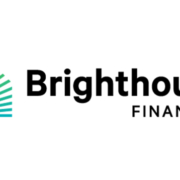Life Insurance Types – The Independent Press

The Independent Press
Money Matters – Skloff Financial Group Question of the Month – May 1, 2013
By Aaron Skloff, AIF, CFA, MBA
Q: I thought there were only two different types of life insurance policies, term and whole. What types of life insurance are available and how do they differ from one another?
A: The Problem — Understanding Different Types of Life Insurance Policies
The life insurance industry has created a myriad of solutions for different needs. Whether life insurance is used to replace income, pay a mortgage, pay for a college education or as an estate planning vehicle, the type of policy implemented should be customized to meet your needs and budget.
The Solution — Differentiating Between Policy Types
There are two basic categories of life insurance, term and permanent. Term may be appropriate if you only need protection for a limited time, such as the life of a mortgage or the time leading up to and the completion of a college education. Permanent may be appropriate if you need lifetime coverage. Let’s look at a variety of the most common types of term and permanent policies.
Traditional Term. As its name implies, Traditional Term life insurance covers you for a specified term, with 10, 20 and 30 years being the most common. Premiums are fixed over the term of the policy. It provides the greatest amount of coverage for the lowest premium.
Return of Premium Term. As its names implies, Return of Premium (ROP) Term life insurance covers you for a specified term, but then returns all of your premiums if you outlive the policy. Premiums are fixed over the term of the policy. It provides the second greatest amount of coverage for the second lowest premium.
Guaranteed Universal Life. Guaranteed Universal Life is a type of permanent life insurance that offers fixed premiums over your lifetime. Unlike most types of permanent life insurance, this type of policy is not designed to build up cash value. It provides the third greatest amount of coverage for the third lowest premium, but is the lowest priced permanent life insurance.
Variable Universal Life. Variable Universal Life (VUL) is a type of permanent life insurance that offers flexible premiums based on how underlying investments inside the policy perform. Unfortunately the investments inside the VUL can drop, decreasing the policy’s cash value and death benefit. Combining something that is intended to be your safest financial instrument (life insurance) with risky investments (stocks and bonds) can be a recipe for disaster. It provides the second least amount of permanent coverage for the second highest premium.
Whole Life. Whole Life is a type of permanent life insurance that can offer fixed premiums. As the insurance company generally charges significantly higher premiums than the actual life insurance costs in the early years of the policy, cash value builds in this type of policy. The accumulated cash value can be used to pay future premiums. It provides the least amount of permanent coverage for the highest premium.
Estate Planning Considerations. Life insurance owned by an Irrevocable Life Insurance Trust (ILIT) still provides for your beneficiaries, while simultaneously removing the policy proceeds (that would normally be included in your estate and possibly subject to federal and state estate taxes) from your estate. As you do not know the number of years you have to live, a term policy could wind up being too short lived. Imagine passing away a week after your term insurance policy expired. On the other hand, a permanent policy can insure your goals are protected – even if you live be over 100 years old.
Action Step: Establish the Right Type of Life Insurance. Establishing life insurance immediately reduces the financial and psychological burdens that can cause hardship when the need for the proceeds arrives. Establishing the right amount and right type of insurance allows you to control what you want to protect in the most cost effective matter. Like most insurance, the earlier you start your policy the lower the cost of the policy. Premiums for the same level of coverage can vary greatly between carriers. Consult with a licensed insurance professional to gain an understanding of all your options.
Aaron Skloff, Accredited Investment Fiduciary (AIF), Chartered Financial Analyst (CFA), Master of Business Administration (MBA) is CEO of Skloff Financial Group, a Registered Investment Advisory firm based in Berkeley Heights. He can be contacted at www.skloff.com or 908-464-3060.













